
|
A classic teepee, complete with open top to vent the
firepit inside. The genuine article tended to be made from skins, rather than
the cloth of which this example is constructed. Still, the technique, and
details are accurate, and an Indian of 200 years ago would find nothing unfamiliar
here. |

|
The camp is still mostly asleep. Visitors have not really
begun to arrive, and the participants are still preparing for the day. |
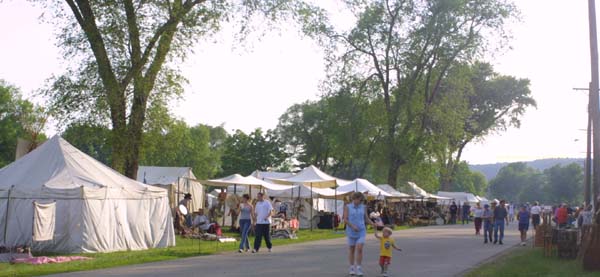
|
Visitors begin to arrive. The day is sunny, and will be
comfortable without being too warm. It is early enough in the summer that
mosquitos are not yet a problem. |
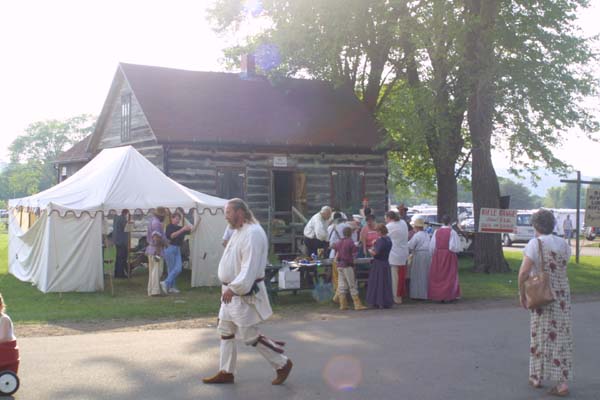
|
This old log cabin is one of the few permanent structures
in the area. It is presently being used as a sign up and staging area for
the black powder competition scheduled for latter in the day. |

|

|
A modern blacksmith plies his trade in classic fashion.
His hearth and tools sit under a protective tent, while he displays his items
for sale. |
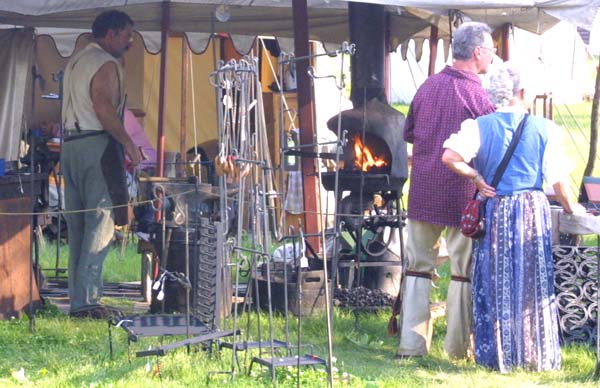
|
Looking though the various wares, and examples of the
blacksmith art, this traditionally attired couple seek something "authentic". |

|

|
A would be mountain woman straightens up, and puts the
finishing touches on her homestead, before starting the day. |
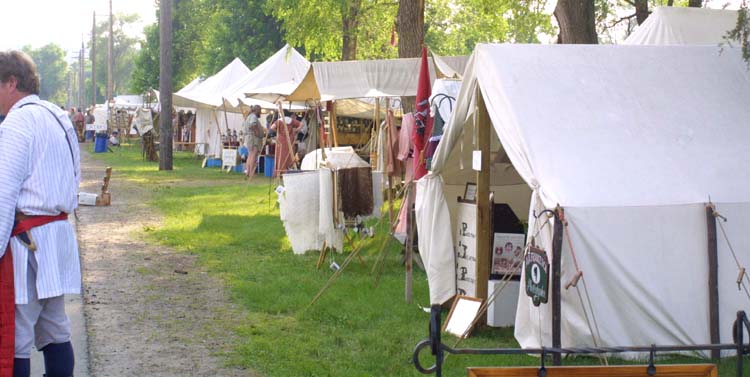
|
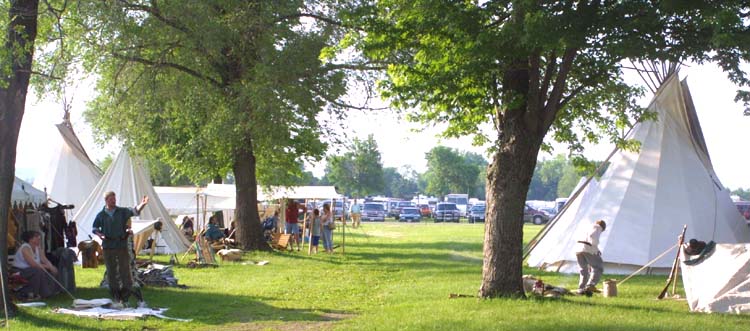
|
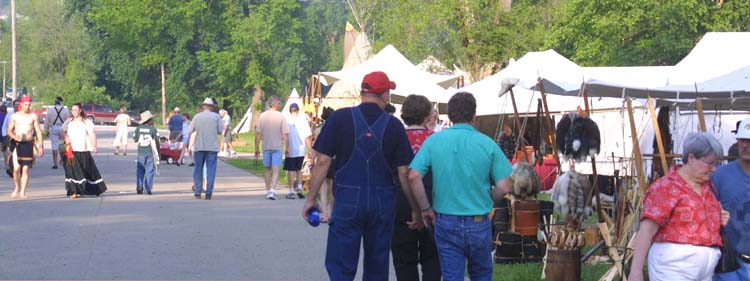
|
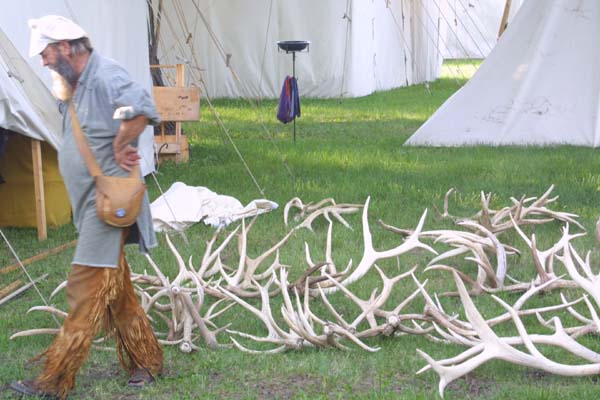
|
Antlers on the grass (alas). In earlier times, such a
display would be for sale, not as curios, but as raw materiel from which
to make everything from buttons, to knife handles, to fish hooks. |

|
A couple of rough hewn "trappers" pass a tent serving
beer and liquor. early trappers would likely have not passed by so quickly. |
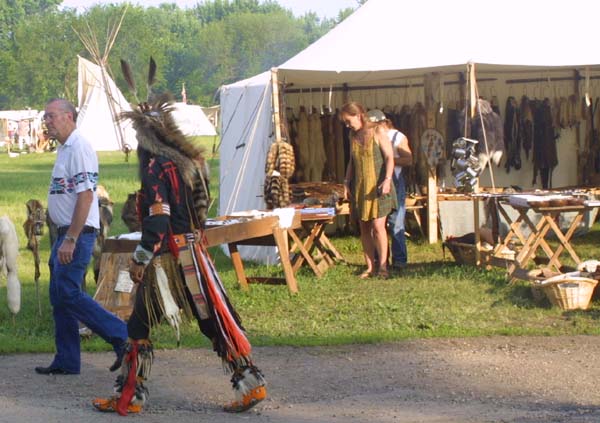
|
A native American in traditional dress, walks along side
of a somewhat less splendidly attired man obviously from the twentieth century.
A girl looks at trinkets in a skirt short enough to have caused
riots at one of the original gatherings in the sixteen hundreds. |
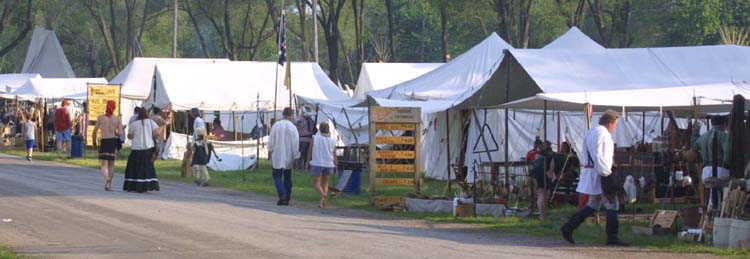
|
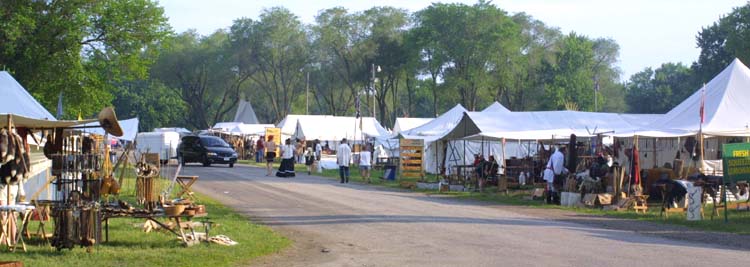
|

|

|
Left:
Ye Olde Public House Tavern, along with dozens of other small tent businesses,
caters to the stomachs of the crowds. Most of these places are open early
for breakfast, and stay open well into the night.
Below:
Fresh squeezed lemonade, along with some snacks can be had in yet another
tent. |

|

|
Left:
Doc's wild rice stew, at the end of the street, also served a nice
breakfast. This is pretty much fashioned after the trapper style diet of
meat, starch, and gravy.
Below:
If Doc's doesn't appeal, there is always the Two Eagles kitchen offering native
cooking including traditional fry bread.
|
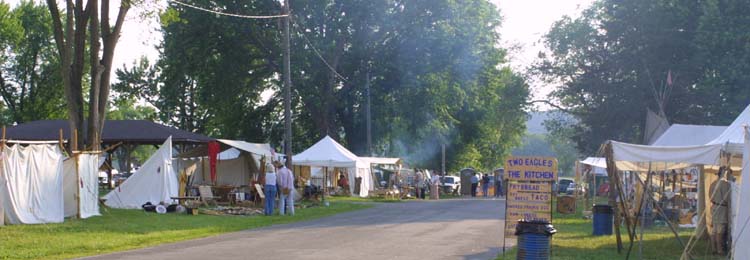
|

|
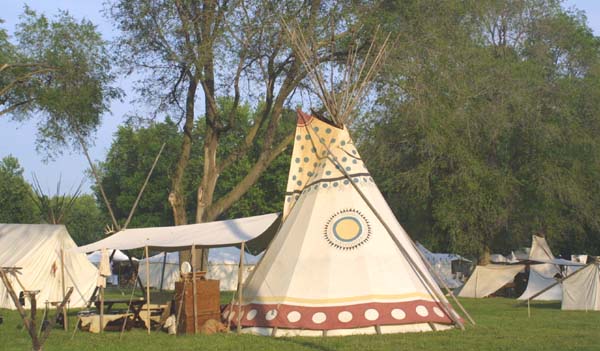
|
A bit less traditional, but probably more comfortable,
this is a more modern style of teepee, with an awning, and a selection of
european style wood furniture. This is not to say that the styling is not
authentic. During the trapping and settling days, there was much trading
of technique between Whites and natives. A teepee such as this would as likely
house a white trapper and his Indian wife, as an Indian family. |
